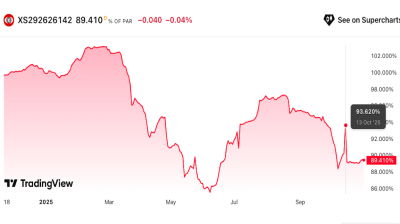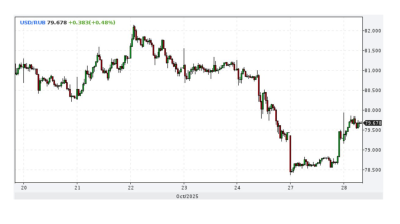Estonian will be the fastest growing economy in the Baltics this year, the European Commission predicted in its autumn economic forecast released on November 9.
The outlook forecasts that Estonia will overtake Latvia as the regional growth leader in comparison to the previous outlook published in May. The Estonian economy is now predicted to grow 4.4% in 2017, a 2.1pp revision in comparison to the previous forecast.
Latvia is likely to register growth of 4.2% this year – also a steep upwards, 1pp more than the May forecast. The outlook for Lithuania was also considerably revised upwards as the Commission added 0.9pp to its forecast growth of 3.8% in 2017.
Estonian growth will be fuelled by the upturn in the EU financing cycle and an increase in household purchasing power next year as well.
“In 2018, household consumption is set to get a boost from a significant personal income tax cut targeted at low and middle-income earners, while wage growth is projected to remain high amid a tight labour market,” the EU executive wrote. The growth forecast for 2018 is 3.2%.
In Latvia, the combination of “thriving consumption, greater foreign demand and a strong rebound in investment” is set to push Latvia’s GDP growth above 4% in 2017, according to the forecast. The Lithuanian growth will be influenced by exports and investment in the first place.
Next year, Lithuania is expected to pose GDP growth of 2.9% while Latvia will become the fastest-growing regional economy with GDP expected to expand 3.5%. Rising inflation in all three states is forecast to eat into disposable incomes and reduce private consumption’s impact as a growth driver.
The Baltic trio will maintain balanced budgets, with Lithuania enjoying minimal surpluses in 2017 and 2018, while the other two countries expected to run deficits, albeit small.
Lithuania will see its public debt grow slightly to 41.5% of GDP in 2017 before dropping to 37.9% of GDP in 2018. Latvia, in turn, is expected to reduce its debt both in 2017 and in 2018 to 39.1% of GDP and 35.6% of GDP, respectively.
Estonia will maintain its unorthodox approach to debt, keeping it at an ultra-low level of 9.2% of GDP in 2017 and 9.1% of GDP in 2018, the Commission expects.
Data

Russia’s manufacturing PMI falls to its lowest level since May 2022 in October
Russia’s manufacturing sector saw a deeper contraction in October, with output, new orders, and business confidence all weakening, according to the latest Purchasing Managers’ Index (PMI) data from S&P Global, published on November 1.

Czech growth accelerates as domestic demand-side pressure builds
The Czech economy delivered an unexpected acceleration in the third quarter, marking a clear shift from its earlier position as a regional underperformer to one of Central and Eastern Europe’s fastest-growing economies.

Eurobonds of Istanbul-listed Zorlu units offer attractive yields amid rating downgrades and no default expectation
Debut paper currently offering 14-15% yield.

Ruble strengthens as sanctioned oil companies repatriate cash
The Russian ruble strengthened after the Trump administration imposed oil sanctions on Russia’s leading oil companies, extending a rally that began after the Biden administration imposed oil sanctions on Russia in January.




